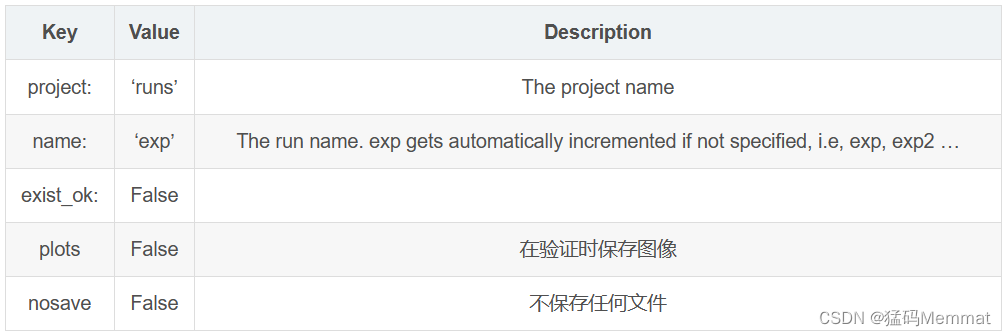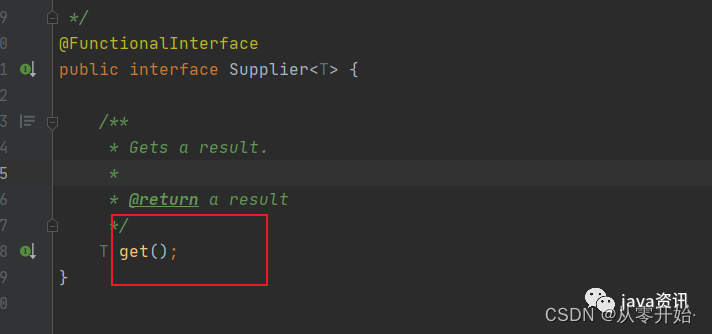Nginx 简介
一、Nginx概述
1.1 概述
Nginx(“engine x”)是一个高性能的 HTTP /反向代理的服务器及电子邮件(IMAP/POP3)代理服务器。

官方测试nginx能够支撑5万并发,并且cpu,内存等资源消耗却非常低,运行非常稳定。最重要的是开源,免费,可商用的。
Nginx还支持热部署,几乎可以做到7 * 24 小时不间断运行,即时运行数个月也不需要重启,还能够在不间断服务的情况下对软件进行升级维护。
1.2 Nginx应用场景
1、单机环境下参考服务器配置。 并发连接数在7000+ -8000左右。 集群模式20000+。
2、作为 Web 服务器:相比 Apache,Nginx 使用更少的资源,支持更多的并发连接,体现更高的效率,这点使 Nginx尤其受到虚拟主机提供商的欢迎。能够支持高达 50,000 个并发连接数的响应。
3、作为负载均衡服务器:Nginx 既可以在内部直接支持 Rails 和 PHP,也可以支持作为 HTTP代理服务器 对外进行服务。Nginx 用 C 编写, 不论是系统资源开销还是 CPU 使用效率都比 Perlbal 要好的多。
4、作为邮件代理服务器:Nginx 同时也是一个非常优秀的邮件代理服务器(最早开发这个产品的目的之一也是作为邮件代理服务器),Last.fm 描述了成功并且美妙的使用经验。
5、Nginx 安装非常的简单,配置文件 非常简洁(还能够支持perl语法),Bug非常少的服务器。
二、Nginx安装
2.1 进入官网下载
2.2 安装相关依赖
2.2.1 第一步
1、 避免:Nginx 与 httpd 发生端口冲突
卸载:可能已经安装的 httpd,从而避免发生<端口冲突>
(rpm -qa | grep -P "^httpd-([0-9].)+") && rpm -e --nodeps httpd || echo "未安装"
2、 下载:Nginx 源码安装包,并解压
cd ~
which wget || yum install -y wget
wget http://nginx.org/download/nginx-1.19.1.tar.gz
3、安装其他依赖
yum install -y gcc pcre-devel zlib-devel
4、创建运行账户nginx
useradd -M -s /sbin/nologin nginx
2.3 安装nginx
-
解压nginx-xx.tar.gz包
tar -axf nginx-1.19.1.tar.gz -
进入解压目录,执行./configure 设置安装路径和运行账户
cd ~/nginx-1.19.1 ./configure --prefix=/usr/local/nginx --user=nginx --group=nginx -
make&&make install
make && make install -
配置网页
cat >/usr/local/nginx/conf/nginx.conf <<EOF worker_processes 1; events { worker_connections 1024; } http { include mime.types; default_type application/octet-stream; sendfile on; keepalive_timeout 65; charset utf-8; server { listen 80; server_name localhost; include conf.d/*.conf; location / { root html; index index.html index.htm; } error_page 500 502 503 504 /50x.html; location = /50x.html { root html; } } } EOF #创建辅助配置文件目录 [ -d /usr/local/nginx/conf/conf.d ] || mkdir -p /usr/local/nginx/conf/conf.d
2.4 设置环境变量,同时设置开机自启
1、设置变量
cat > /etc/profile.d/nginx.sh<<EOF
export PATH="/usr/local/nginx/sbin:\$PATH"
EOF
2、刷新环境
source /etc/profile
3、启停:Nginx 服务进程
echo "/usr/local/nginx/sbin/nginx" >> /etc/rc.d/rc.local ## 设置:开机自启动
chmod +x /etc/rc.d/rc.local
nginx 或 nginx -c /usr/local/nginx/conf/nginx.conf ## 启动:Nginx 服务
2.5 访问
直接浏览器输入虚拟机ip地址测试
三、nginx常用命令和配置文件
3.1 常用命令
#查看版本
nginx -v
#检查配置文件错误
nginx -t
#启动nginx
nginx
#关闭nginx
nginx -s stop
#重加载nginx
nginx -s reload
3.2 配置文件详细讲解
#配置文件位置
位置:/usr/local/nginx/conf/nginx.conf
★ 查看:<Nginx 主配置文件>的<默认配置>
# cat /usr/local/nginx/conf/nginx.conf | grep -vE "^\s*(#|$)"
worker_processes 1;
events {
worker_connections 1024;
}
http {
include mime.types;
## 导入:<MIME 类型定义配置文件>,其<路径>相对于[当前目录]
## <mime.type 配置文件>定义:什么类型的<文件>,需用什么<应用组件>打开?
default_type application/octet-stream;
sendfile on;
keepalive_timeout 65;
charset utf-8; ## 设置语音编码为utf-8,使其页面支持中文
server {
listen 80; ## 设置:侦听端口和 IP 地址
server_name localhost;
## 导入:<自定义配置文件>(可以是相对路径 ☚ 以<主配置文件>的<当前目录>为<根目录>)
include conf.d/*.conf;
location / {
root html;
index index.html index.htm; ## 定义:<默认首页文件名>
}
error_page 500 502 503 504 /50x.html;
location = /50x.html {
root html;
}
}
}
3.3 理解:<Nginx 主配置文件>的<语法格式>及<默认配置>
┍
main 主配置段 ┤ worker_processes 1; ## 指定:<nginx: worker process 工作进程>的<数量>
│ ## 单 CPU,建议:1 个
│ ## 多 CPU,建议:CPU 总核心数
└
┍ events {
evens 事件配置段 ┤ worker_connections 1024; ## 设置:单个工作进程的<并发最大连接>
└ }
┍ http {
│ include mime.types;
│ default_type application/octet-stream;
│ sendfile on;
│ keepalive_timeout 65;
│ server { ─────────────────────────────┐
│ listen 80; │
http 网站配置段 ┤ server_name localhost; │
│ ┍ location / { │
│ │ root html; │
│ │ index index.html index.htm; ├定义:虚拟主机
│ └ } │
│ error_page 500 502 503 504 /50x.html; │
│ ┍ location = /50x.html { │
│ │ root html; │
│ └ } │
│ }─────────────────────────────────────┘
└ }
四、Nginx反向代理与负载均衡
4.1 反向代理
**反向代理:**正好相反。对于客户端来说,反向代理就好像目标服务器。并且客户端不需要进行任何设置。客户端向反向代理发送请求,接着反向代理判断请求走向何处,并将请求转交给客户端,使得这些内容就好像它自己的一样,一次客户端并会并会不感知到反向代理后面的服务,因此不需要客户端做任何设置,只需要把反向代理服务器当成真正的服务器就好了。
4.2 负载均衡
负载均衡建立在现有网络结构之上,它提供一种链家有效透明的方法扩展网络设备和服务器的宽带、增加吞吐量,加强网络数据处理能力,提高网络的灵活性和可用性。
Nginx proxy反向代理模块 (默认安装)
功能 1:可以作为<应用程序网关>
对外隐藏:<内网服务器>的<IP地址>
对外发布:<内网服务器>的<服务资源>
功能 2:可以实现<动静分离>
通过 location URI 地址匹配,实现:转发<动态网页的请求>。
vim /usr/local/nginx/conf/nginx.conf
location / {
proxy_pass http://服务器池;
} ##<上游服务器>指 被反向代理的服务器
或 proxy_pass http://后端服务器池的名字;
## 例如:
vim /usr/local/nginx/conf/nginx.conf
....
location / {
....
proxy_pass http://xm;
}
....
Nginx upstream 上游模块(负载均衡)
#指令 和 功能
upstream 定义:一个命名的<后端服务器池>
server 定义:服务器池里的服务器
ip_hash 启用:基于<IP地址哈希值>的<负载均衡算法>
负载均衡的部署方式
1.轮询(默认)
每个请求按时间顺序逐一分配到不同的后端服务器,如果后端服务器down掉,能自动剔除
vim /usr/local/nginx/conf/nginx.conf
....
http {
upstream xm { ##xm 服务器池的命名,不要有下划线
server ip地址:80; ##上游服务器ip:端口
server ip地址:80;
}
...
}
保存后出去重载文件
nginx -s reload
# 例如:
vim /usr/local/nginx/conf/nginx.conf
worker_processes 1;
events {
worker_connections 1024;
}
http {
include mime.types;
default_type application/octet-stream;
sendfile on;
keepalive_timeout 65;
charset utf-8;
upstream test { ## 定义test组
server 192.168.106.147:80; ## 定义test组里有那些机器
server 192.168.106.148:80; ## 这几条ip换成自己web服务器的IP地址
}
server {
listen 80;
server_name localhost;
include conf.d/*.conf;
location / {
root html;
index index.html index.htm;
proxy_pass http://test; ## 有请求就转发到test组
}
error_page 500 502 503 504 /50x.html;
location = /50x.html {
root html;
}
}
}
2.weight (权重)
权重越大,被分配到的任务越多,被访问的概率越高
vim /usr/local/nginx/conf/nginx.conf
....
http {
upstream xm {
server ip地址:80 weight=7; #默认weight=1
server ip地址:80 weight=3;
}
...
}
#如上例,分别是70%和30%
保存后出去重载文件
nginx -s reload
## 例如:
worker_processes 1;
events {
worker_connections 1024;
}
http {
include mime.types;
default_type application/octet-stream;
sendfile on;
keepalive_timeout 65;
charset utf-8;
upstream test { ## 定义test组
server 192.168.106.147:80 weight=7; ## 定义test组内的机器
server 192.168.106.148:80 weight=3; ## 定义test组内的机器
}
server {
listen 80;
server_name localhost;
include conf.d/*.conf;
location / {
root html;
index index.html index.htm;
proxy_pass http://test;
}
error_page 500 502 503 504 /50x.html;
location = /50x.html {
root html;
}
}
}
3.ip_hash(哈希算法)
客户第一次访问某个服务器后短时间断开,再次访问自动定位到该服务器
vim /usr/local/nginx/conf/nginx.conf
....
http {
upstream xm {
ip_hash;
server ip地址:80;
server ip地址:80;
}
...
}
保存后出去重载文件
nginx -s reload
# 例如:
worker_processes 1;
events {
worker_connections 1024;
}
http {
include mime.types;
default_type application/octet-stream;
sendfile on;
keepalive_timeout 65;
charset utf-8;
upstream test {
ip_hash; ## 定义哈希算法
server 192.168.106.147:80;
server 192.168.106.148:80;
}
server {
listen 80;
server_name localhost;
include conf.d/*.conf;
location / {
root html;
index index.html index.htm;
proxy_pass http://test;
}
error_page 500 502 503 504 /50x.html;
location = /50x.html {
root html;
}
}
}
五、Nginx+php动静分离
为了加快网站的解析速度,可以把动态页面和静态页面由不同的服务器来解析,加快解析速度,降低原来单个服务器的压力。一般来说,都需要将动态资源和静态资源分开,由于Nginx的高并发和静态资源缓存等特性,经常将静态资源部署在Nginx上。如果请求的是静态资源,直接到静态资源目录获取资源,如果是童泰资源的请求,则利用反向代理的原理,把请求转发给对应后台应用去处理,从而实现动静分离。
1. 动态和静态分离主要是通过nginx + PHP FPM实现的,其中nginx处理图片、html等静态文件,PHP处理动态程序。
2. 动态静态分离是指在web服务器架构中,将静态页面与动态页面或静态内容接口与动态内容接口分离,从而提高整个服务的访问性能和可维护性的架构设计方法。
3. 简单地说,当用户请求时,如果他只是访问静态请求,比如图片和html, nginx会直接返回。如果他发送了一个动态请求,nginx会把这个请求发送给程序进行动态处理
1、配合php实现动态页面和静态页面分开处理
1、删除httpd
rpm -e httpd --nodeps
2、安装php及其组件
yum install -y php php-devel php-mysql
yum install -y php-fpm
3、启动php及其组件,同时将其加入开机自启
systemctl enable php-fpm
systemctl start php-fpm
2、修改运行用户
sed -i -r 's/^\s*user\s*=.*/user = nginx/' /etc/php-fpm.d/www.conf
sed -i -r 's/^\s*group\s*=.*/group = nginx/' /etc/php-fpm.d/www.conf
重启服务
systemctl restart php-fpm
3、修改配置文件
cat > /usr/local/nginx/conf/conf.d/location_php.conf <<EOF
location ~ \.php$ {
root html;
fastcgi_index index.php;
fastcgi_pass 127.0.0.1:9000;
include fastcgi_params;
fastcgi_param SCRIPT_FILENAME \$document_root\$fastcgi_script_name;
if (!-f \$document_root\$fastcgi_script_name) {
return 404;
}
}
EOF
重载nginx
nginx -s reload
4、编写php页面
cat > /usr/local/nginx/html/index.php <<EOF
<?php
phpinfo();
?>
EOF



















